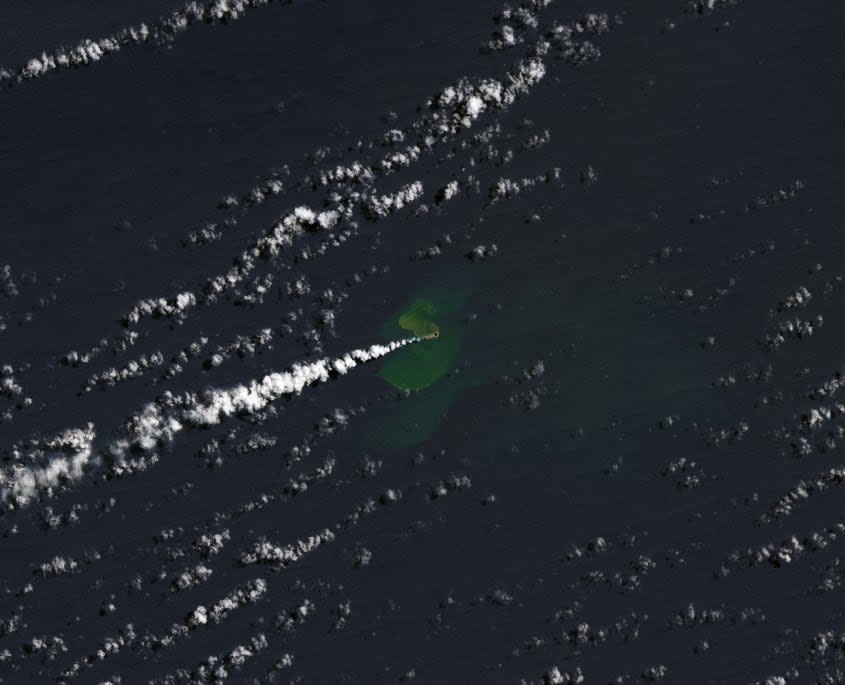New Pacific island forms after underwater volcano erupts

A new island recently appeared in the south Pacific Ocean, but it has no name just yet, according to NPR.
The new land was seen "pok[ing] out" after an underwater volcano erupted earlier in the month. It occurred "near Tonga," NPR noted, "oozing lava and expelling steam and water above the surface."
When the eruption happened on Sept. 10, NASA says the water surrounding the island became "discolored," and they took photos of the site using the "Operational Land Imager-2" satellite, Al Jazeera reports. Researchers suggest that the discolored surrounding seawater "contain[s] particulate matter, volcanic rock fragments, and sulfur."
According to NASA, these sorts of islands don't typically last long; however, there are some instances where they "can go on to exist for years." One example shared by NPR: Back in 1995, an "island [was] created by the nearby Late'iki Volcano," and it lasted for 25 years.
Tonga Geological Services notes that the size of the island is estimated to be about "4,000 square meters, with an elevation of 10.1 meters about sea level." While the volcano, on a seamount called Home Reef, is considered low risk to the surrounding community, TGS still warns all sailors to keep a 2.49-mile distance away from the area.
Visit the NASA Earth Observatory website to learn more.
You may also like
7 cartoons about DeSantis and Abbott's migrant relocation
New Pacific island forms after underwater volcano erupts
Arizona judge bans abortion statewide by reinstating 1864 law

